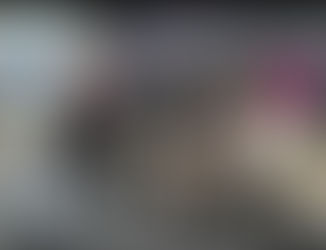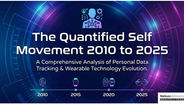Quantum Computing, Quantum Entanglement and Quantum Optics : How Quantum Health Technologies will dr
- Renee Puchalski
- Mar 12, 2018
- 5 min read

Quantum technologies analyze data at the cellular level, in the world of atoms and subatomic particles. Medical tools built using this technology are ultra-precise and ultra-personalized. By using these types of tools, doctors and patients are freed from scientific-only diagnosis and treatment. In addition, quantum technologies open the door to new forms of healing. As these tools become more prominent in the medical field, misdiagnosing and mistreating of patients will become less likely and eventually, nonexistent.
The First Quantum Revolution: Quantum Applications
Breakthroughs in medical data storage, transmission and protection, as well as, DNA analysis, screening, and needle injections have already been made using quantum technologies. This first quantum revolution laid the physical foundation of advanced medical innovations, such as computer chips, lasers, magnetic resonance imaging and modern communications technology.
Here are a few of the ways quantum health applications and products are being implemented in the medical field.
Data Security and Protection with Quantum Cryptology and Cryptography
The healthcare industry is beginning to protect and secure the transfer of medical data with quantum technologies, such as quantum cryptography and quantum cryptology. Quantum cryptography uses photos, photons (or light particles) and phsyics to create cryptologic quantum keys that cannot be decrypted during transmission.
Quantum cryptology transfers photons through a custom-made, fiber-optic cable that is completely independent of the Internet. The quantum cryptography and quantum cryptology data encryption methods are stable and unbreakable. Both technologies transfer medical data by individual photons, which cannot be manipulated without leaving remnants of an intrusion. According to Wikipedia, it is impossible to copy data encoded in a quantum state and the very act of reading data encoded in a quantum state changes the state. It is the quantum state that is used to detect eavesdropping in quantum cryptography and quantum cryptology.
Screening and Testing with Quantum Optics and Sensing
Quantum optics and atomic physics are revolutionizing medical screening and testing. Medical researchers are utilizing a new method of detecting disease that involves the use of “biomarkers”, such as gold and diamond nanoparticles. These nanoparticles have quantum properties that allow them to attach to disease-fighting cells, such as cancer cells, and make the visible using Magnetic Resonance Imaging (MRI) technology. This quantum “biomarkers” method of disease detection is not only more accurate, but cheaper and more flexible than conventional alternatives. In addition, this type of screening can be done without invasive surgery or harmful side effects to the patient. As quantum controls continue to open the door for enhanced MRI testing, earlier molecular change detections will increase, which will expand treatment options and improve patient outcomes. In the future, it is possible that quantum sensors will be used to monitor and detect environmental pollutants and biomolecules that cause disease.
Needle Injection Substitute with Nanotech Drug Delivery
Nanotech drug delivery is relieving needle-phobic patients of being poked with a syringe. A new nanotech patch that replaces the hypodermic needle will be used to deliver medications through hair follicles. For example, University of York designed a patch, called Nanject, to deliver cancer drugs in the form of quantum nanoparticles to patients without harming healthy cells.
DNA Sequencing with Quantum Computing
Quantum computers are allowing researchers to map proteins and analyze entire genomes to create more effective patient therapies. In addition, by using quantum computers, scientists and medical researchers can more quickly sequence DNA, allowing them more time to solve other Big Data problems in healthcare. The future of quantum computers and DNA sequencing opens up the possibility of personalized medicine based on a patient’s genetic makeup.

The Second Quantum Revolution: Quantum Entanglement of Humans
The second quantum revolution takes advantage of the phenomenon of quantum entanglement.
Entanglement is the strange phenomenon in which two quantum particles become so deeply linked that they share the same existence. When this happens, a measurement on one particle immediately influences the other, regardless of the distance between them. (The Experiment That Will Allow Humans to “See” Quantum Entanglement, February 2016) This natural phenomenon was recognized by medical researchers as early as the 1930s. Today, entanglement forms the basis for many new potential health applications, such as quantum communications, that will improve patient diagnosis and treatment.
When ill, doctors often find it easy to listen to the body to determine what it needs, but listening to a patients’ bodies is not always easy. Asking the patient questions about symptoms is not always enough to determine the root cause of a disease. This communication problem deters the doctor from being able to feel what the patient is feeling and prevents the discovery of the ultimate solution – the cure. Therefore, a doctor might prescribe a medication that will heal the symptoms that a patient is feeling, but not the illness. Symptomatic prescriptions can last a lifetime – wasting a patient’s time, energy and money on a medication that will only heal the surface of an illness.
To improve a medical diagnosis, medical researchers are beginning to consider the use of quantum entanglement. Quantum entanglement will allow medical researchers and scientists to walk in the shoes of the ill and truly feel what the patient is feeling. This phenomenon allows the researcher’s body to feel the physical pain and mental anguish of the disease, however, the researcher’s body may instinctively react differently from the patient’s body to heal itself. For example, once entangled, although the researcher’s body is mirroring all of the ailments of an illness, he might start to crave different healing foods.
By allowing the researcher’s body to instinctively react and heal itself, we become closer to the discovery of a real cure for a disease. Whether or not the entangled patient will start to consume the same healing foods is unknown and yet to be determined. However, this knowledge can be verbally communicated between the doctor and patient.
Improved diagnostics and cure discoveries are not the only benefits of quantum entanglement. This technology is a proven provider of more advanced treatment of the patient. Medical researchers can heal others through the shared energy and collective consciousness of quantum entanglement. By choosing positive and healing thoughts, patients mirroring the entangled researcher, choose positive and healing thoughts. Through this type of conditioning, patients learn how to psychologically and physically heal themselves with or without medication.
Conclusion
The use of advanced quantum health technologies in the medical field will dramatically improve the lives of patients. By allowing researchers to conduct deeper studies into the cause of illnesses, we are more likely to find the root cause of diseases and ultimately, real cures. As a result, quantum applications and products will educate and prevent doctors from prescribing the wrong medications or symptomatic medications that do not heal the patient.
Although their impact on society and economics in unpredictable, quantum technologies are expected to develop along similar lines as the laser, which has become an indispensable part of our lives since the early 1960s. Ultimately, everyone in our society will benefit from the research, development and implementation of quantum health applications and products in the medical field.
Source : http://everglowingsouls.com/?p=1384



















































Comments